In the center of Buon Ma Thuot city, there is an ancient, massive pagoda that caught our eyes as soon as we arrived. It was both the first pagoda built on the sunny and windy land of the Highlands, and the last pagoda in Vietnam to be awarded the title of royal palace by the feudal regime.
Discover the history of the first pagoda in the Highlands
Located at 117 Phan Boi Chau Street, Buon Ma Thuot City, Dak Lak Province, Sac Tu Khai Doan Pagoda lies quietly under the shade of trees, giving visitors an indescribable feeling of peace and relaxation.
At first glance, the temple looks very new, but in fact, it was built more than 100 years ago. The pristine, seemingly new appearance of Sac Tu Khai Doan comes from the fact that the temple is regularly repaired, cleaned and cared for.

It is unclear how many times this large pagoda has been repaired, we only know that - when mentioning this construction, people will immediately remember the historical milestones of the past.
Although the pagoda was built after the end of the feudal regime in Vietnam, Sac Tu Khai Doan was still granted a royal title, becoming the last pagoda to be granted a royal title by the feudal regime. The construction was established from 1951-1953, during the period when Vietnam was fighting against French colonialism. The person with the greatest contribution to the construction of the pagoda was Mrs. Hoang Thi Cuc, also known as Doan Huy Hoang Thai Hau (mother of King Bao Dai, and wife of King Khai Dinh). The name Khai Doan of the pagoda was a combination of the names of King Khai Dinh and his wife - Doan Huy Hoang Thai Hau. It was not until 1953, after being granted a royal title, that the pagoda was called by the name - Sac Tu Khai Doan as it is now.
*Phong sac tu: Sac tu is a type of document granted to a pagoda or a person. The content of the sac tu often clearly states the regulations on the construction, renovation, and preservation of the pagoda, objects, items (physical) or titles, graces (intangible), or regulations on the performance of religious rituals.
In addition to being the first pagoda built in the Central Highlands, Sac Tu Khai Doan is also the first pagoda of the Buddhist organization during the period of Vietnamese Buddhist Renaissance in the Central Highlands (1930-1945). Currently, the pagoda is one of the largest Buddhist centers in the Central region of Vietnam.
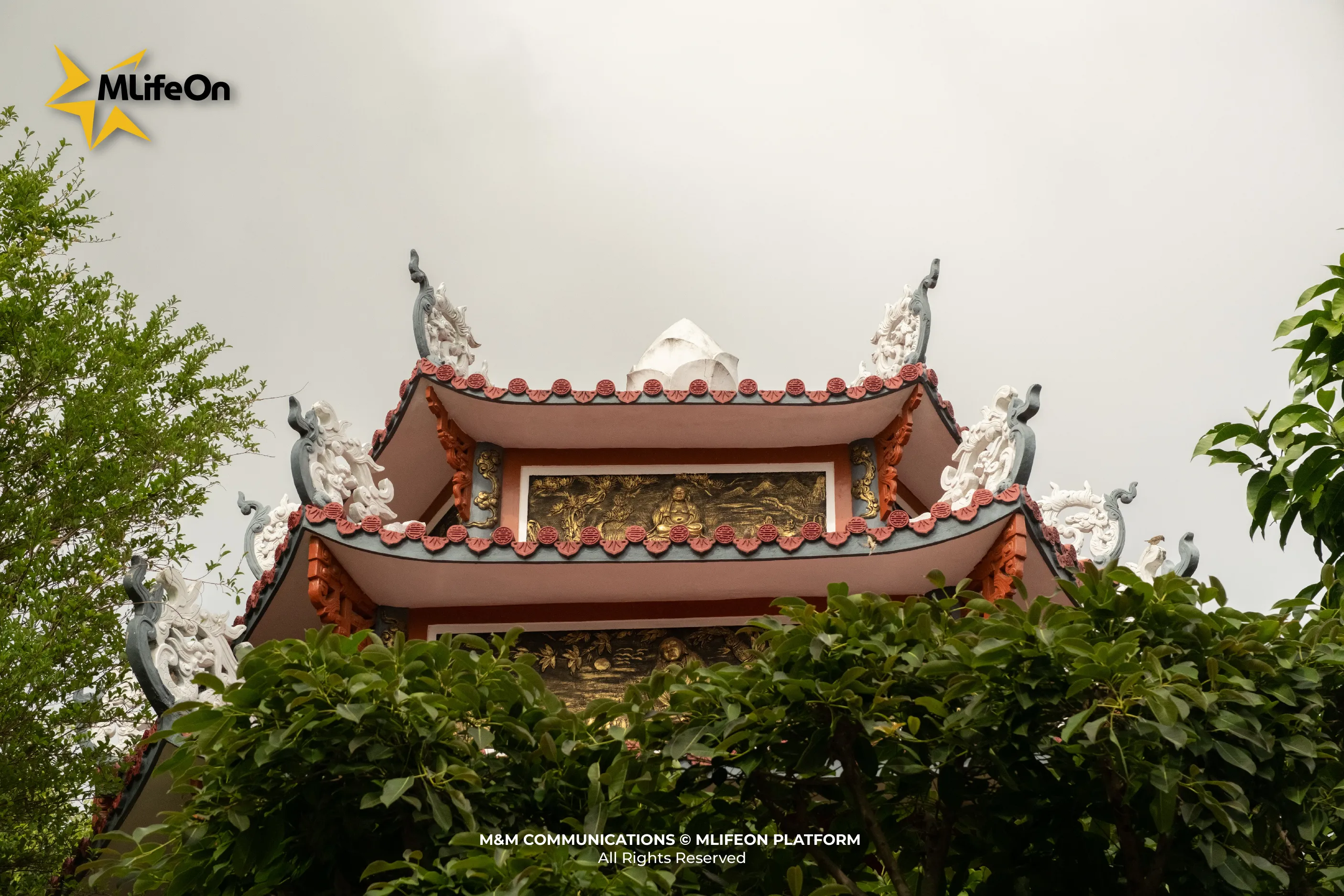
Architecture blends the Central Highlands style
Built on the land donated by Queen Mother Doan Huy Hoang, the pagoda is the largest Buddhist structure in Buon Ma Thuot city in particular, and in Dak Lak province in general.
The structure not only makes us admire it because of its large area but also because of its unique architectural style with a blend of royal and ethnic elements.
The project not only made us admire it because of its large area but also because of its unique architectural style with a blend of royal and ethnic elements.
Specifically, the pagoda was designed and built in the style of Hue royal architecture, combining delicately and harmoniously with the typical stilt house style of the Ede people in the Central Highlands. The most obvious feature of this architectural style is that the pagoda's rooms are built next to each other, not too high but very wide and large, creating a solid position, while the patterns and motifs have the sophisticated and meticulous expression of royal architecture.
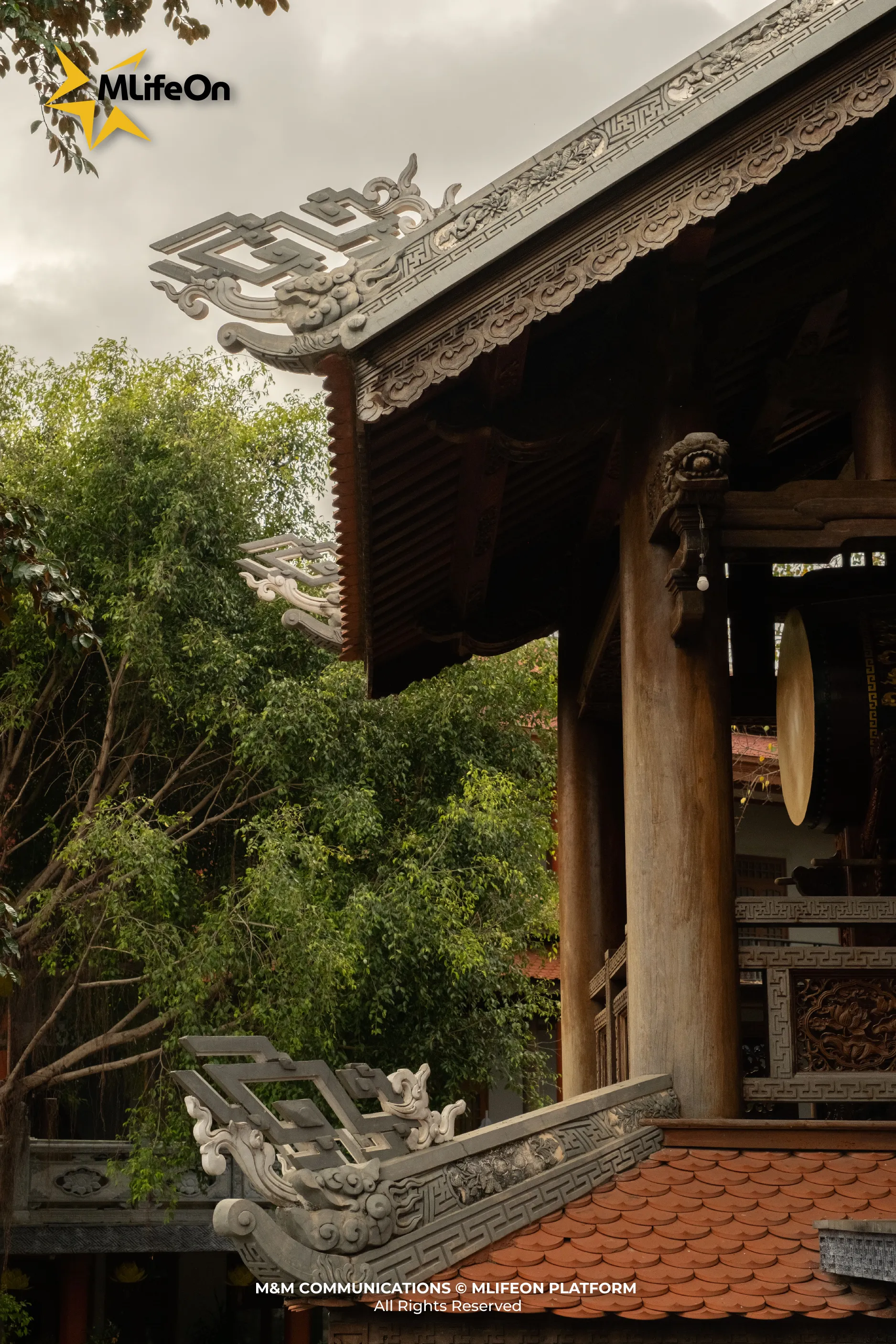

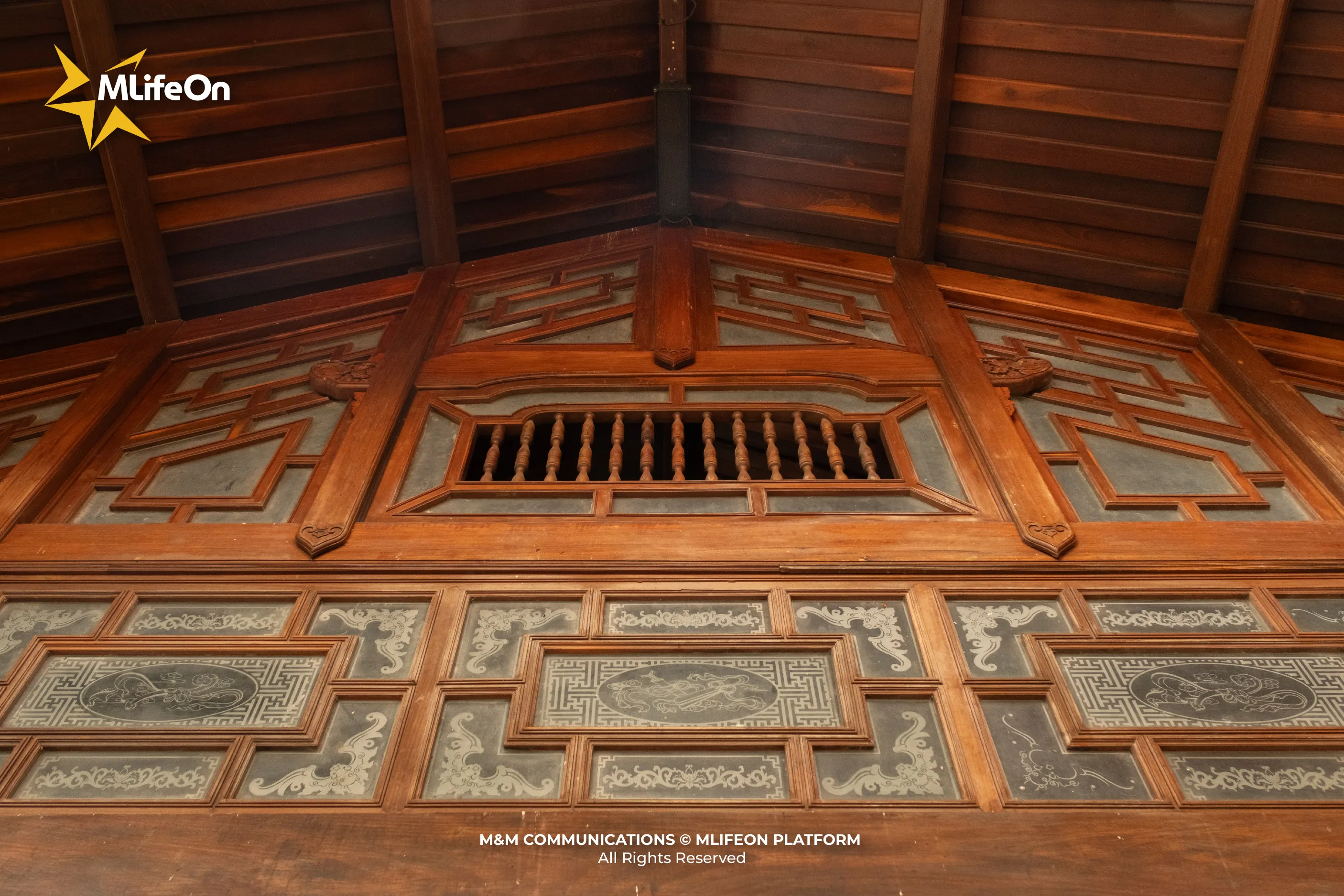
We were first greeted by the Tam Quan Gate, consisting of two floors with three arches 7m high and 10.5m wide. The architectural work truly bears the artistic nuances of the imperial city's architecture, high, wide, and deep. Below are 3 entrance gates, above are 3 moon-viewing towers, similar to the entrance gates of royal palaces.
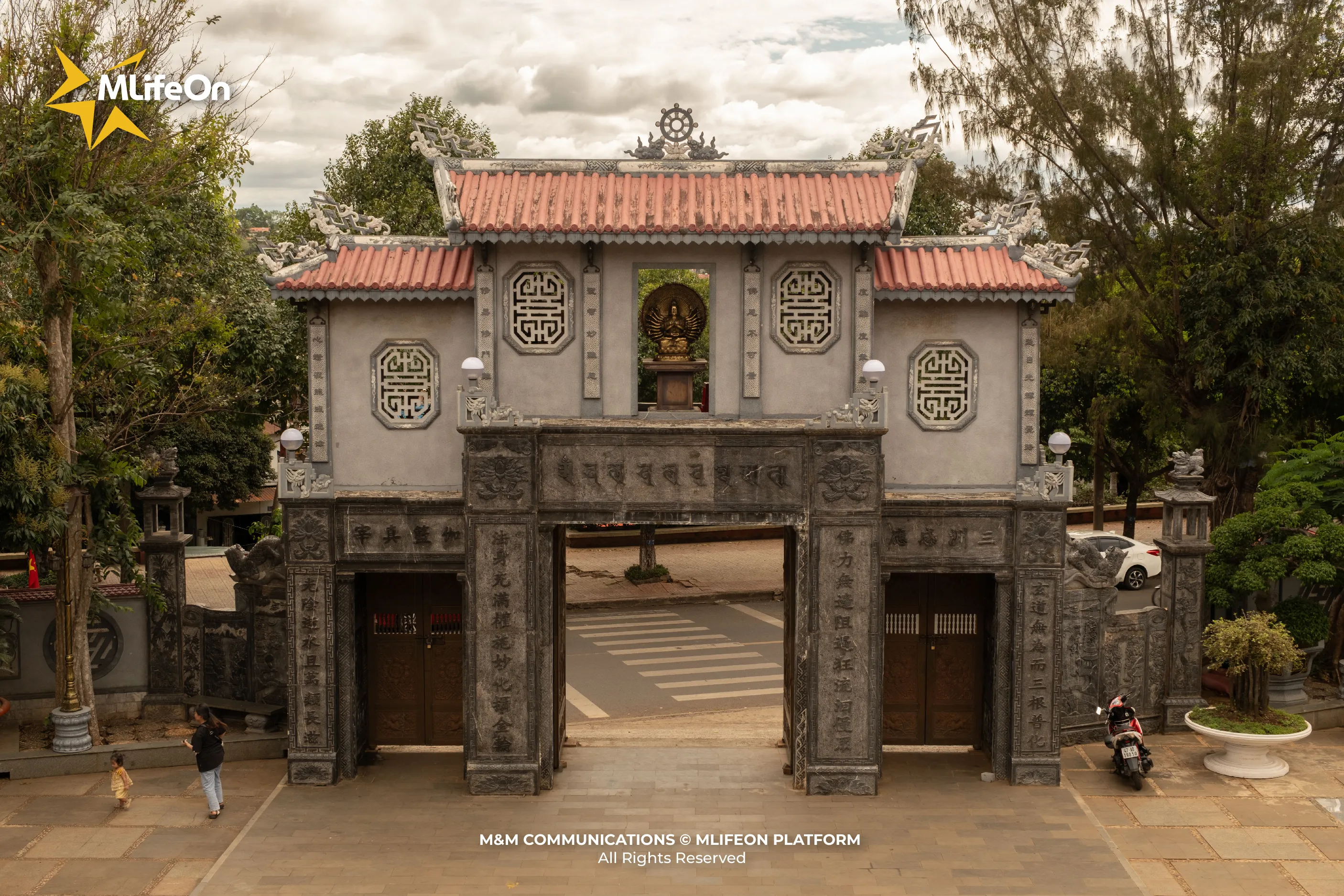
Next to it is Quan Am Temple (or Quan Am Cac) built in 1972. This is a unique architectural work, a work of art built by Hue craftsmen. This work was built separately from the Main Hall and has a hexagonal shape with six columns decorated with dragons and clouds. The base of the Temple is located in the middle of a lake with fish, turtles and water lilies below, evoking a sense of tranquility when visiting to worship and pray for children.
The most special and attractive feature of the temple is the main hall area. Around 2012-2016, the Pagoda underwent a major renovation, the Main Hall was rebuilt mainly with marble and precious ironwood but still retained the architectural style combining the Hue Royal Palace and the Central Highlands longhouse.
The front half is built in the style of a longhouse of the Central Highlands ethnic people. The back half is made in a more modern style but still retains the ancient royal features. Inside the main hall, there are large and sturdy ironwood pillars. In addition, the majestic statue of Buddha Shakyamuni stands out in the middle of the main hall, made entirely of bronze, up to 1.1m high; the lotus platform below is made of precious wood, all the carvings are created by the meticulous and elaborate hands of artisans.
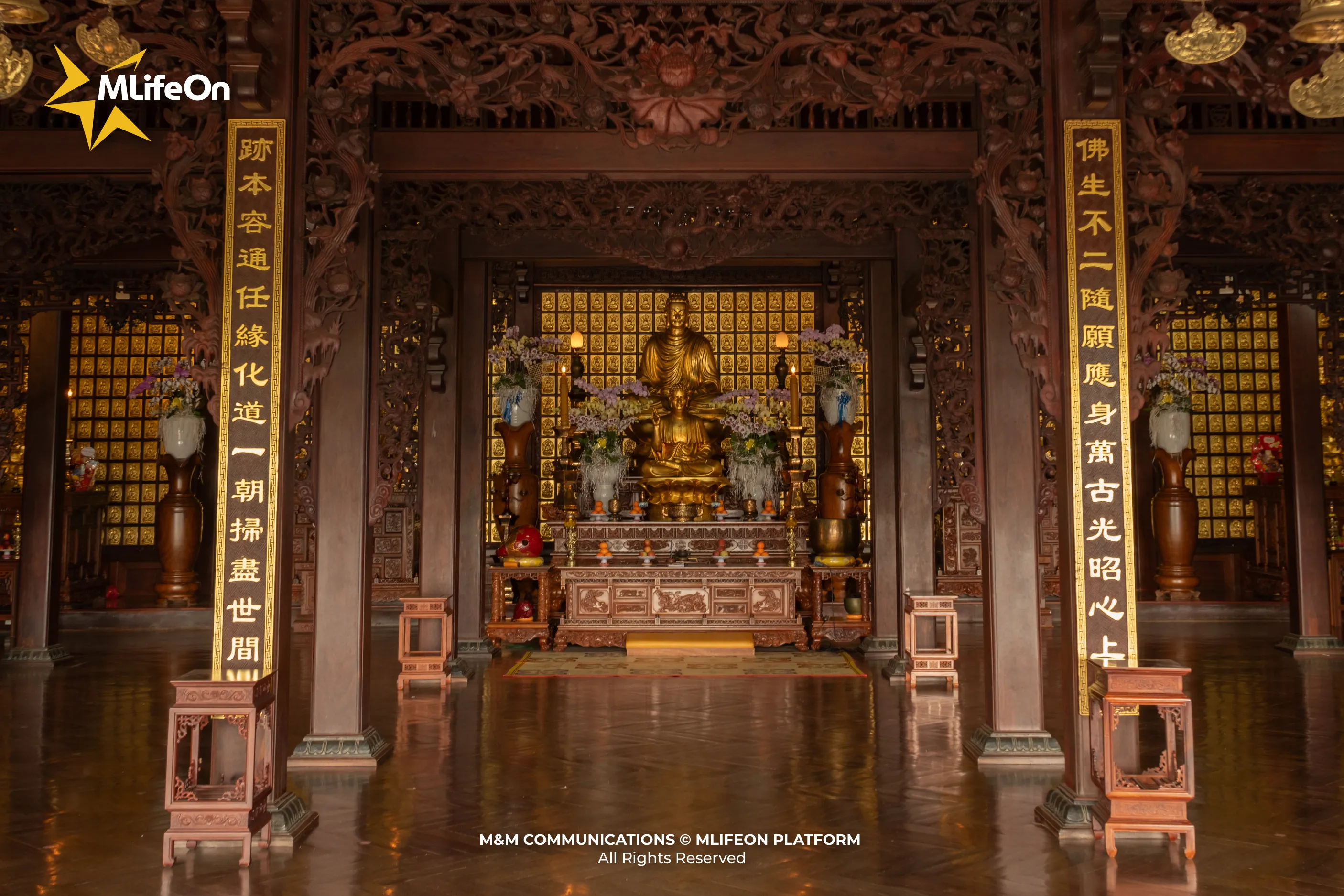
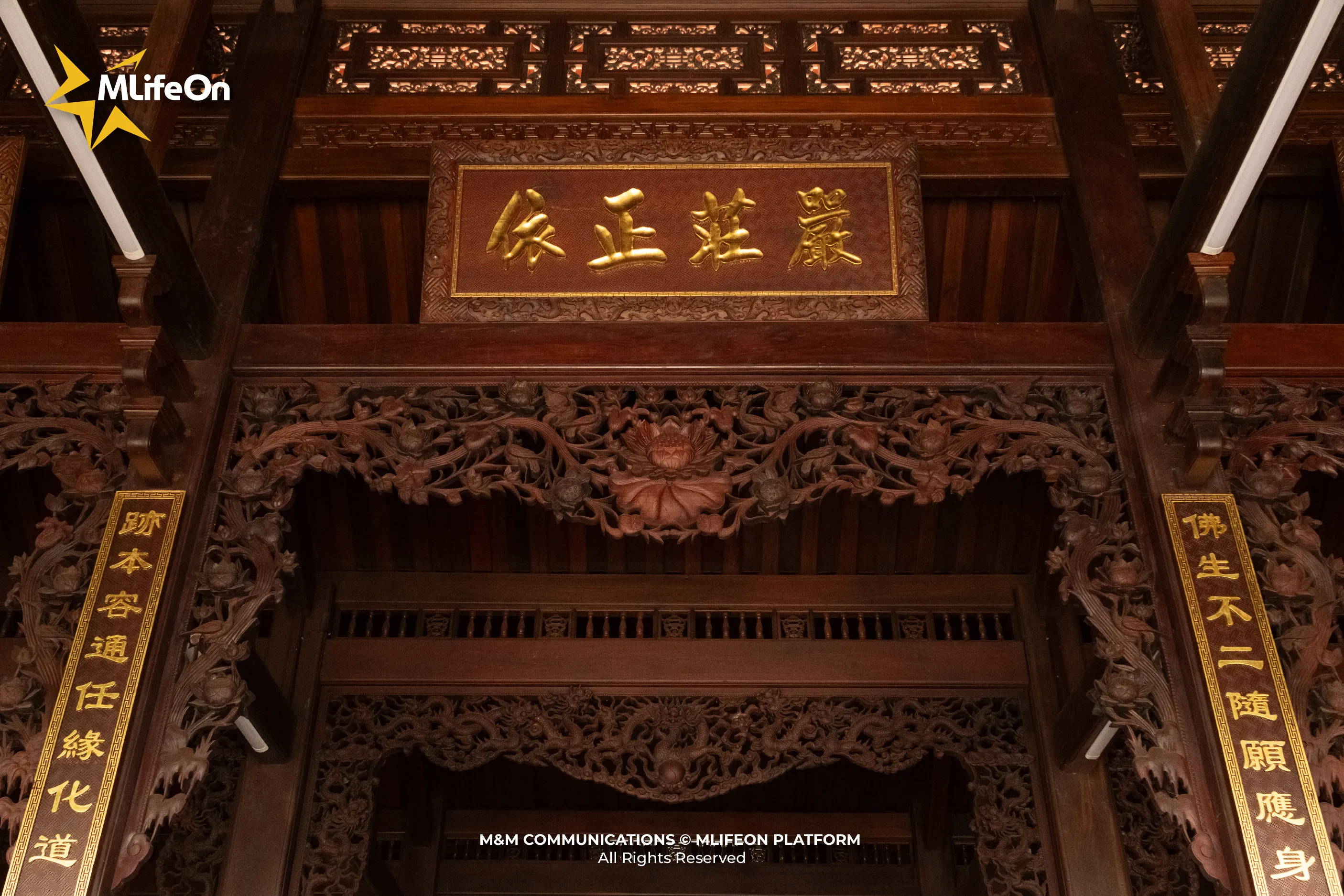
When coming to the pagoda, in addition to the places of worship of Buddha and Quan Am, you can also visit the Cong Duc Tang area, which was renovated and built in 1993. This is considered a place to commemorate the merits of predecessors through the ages, from the initial construction to the 6th generation of abbot of Sac Tu Khai Doan Pagoda.
The pagoda is built mainly of wood. The deep brown color of the wood, combined with the gray color of the granite, contributes to creating a quiet, ancient scene for the construction. Surrounding the campus are green trees, and the peaceful sounds of wind chimes and temple bells.
Going up the stairs, getting closer to the main hall, touching the cool wooden surface of the wall, the pillars, looking at the calm face of the Buddha, listening to the sound of the wind chimes, we felt our minds calm down, feeling as if time here was stopping, the chaos of life was also stopping. There was only sound, peace was happening, joy and peace were blooming.
We came to Buon Ma Thuot for another reason, but when we left this place, what we remembered most was the peaceful scene in the grounds of Sac Tu Khai Doan Pagoda, the sound of the wind chimes in the middle of a hot afternoon, the feeling of slowing down in the middle of the daily life.
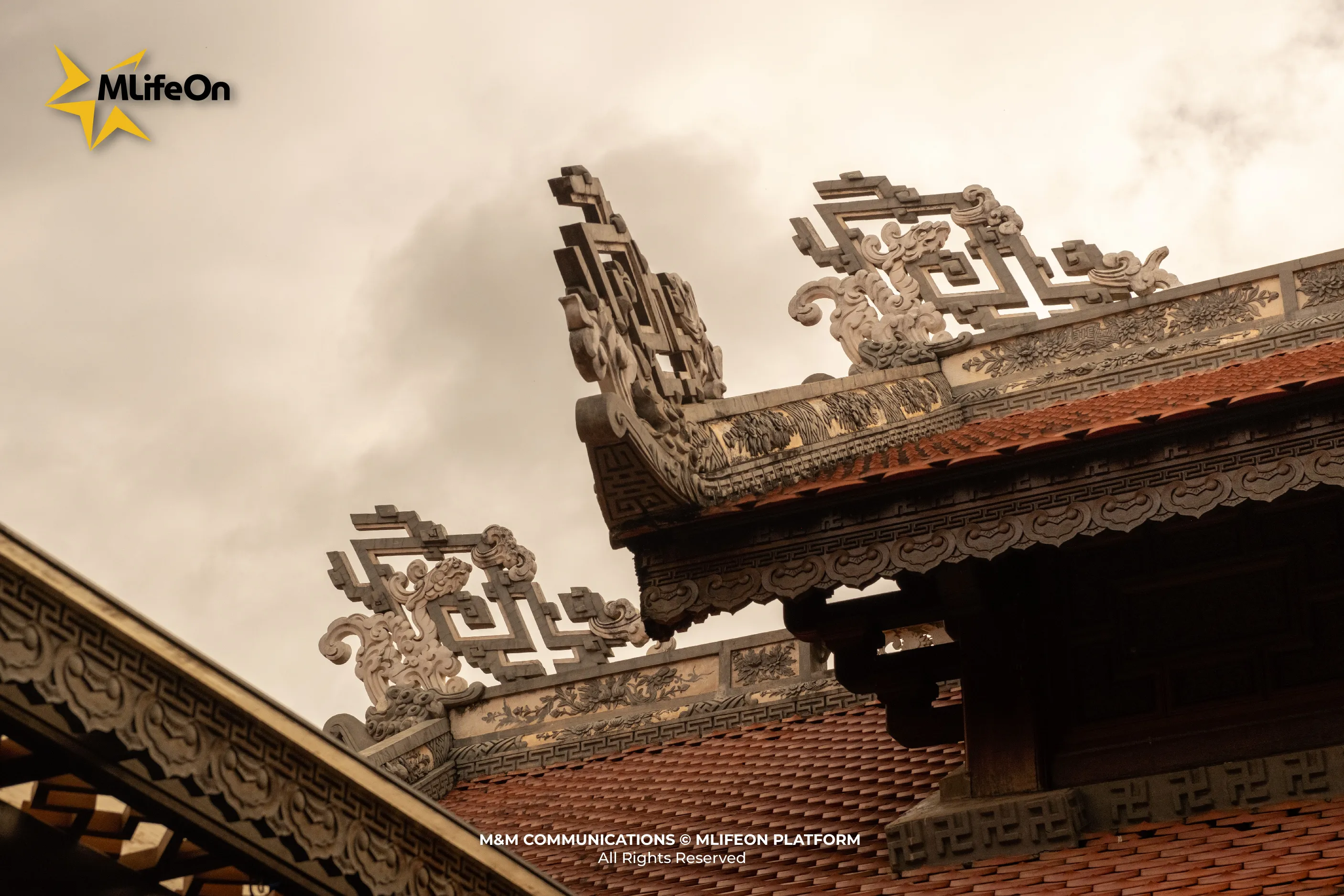
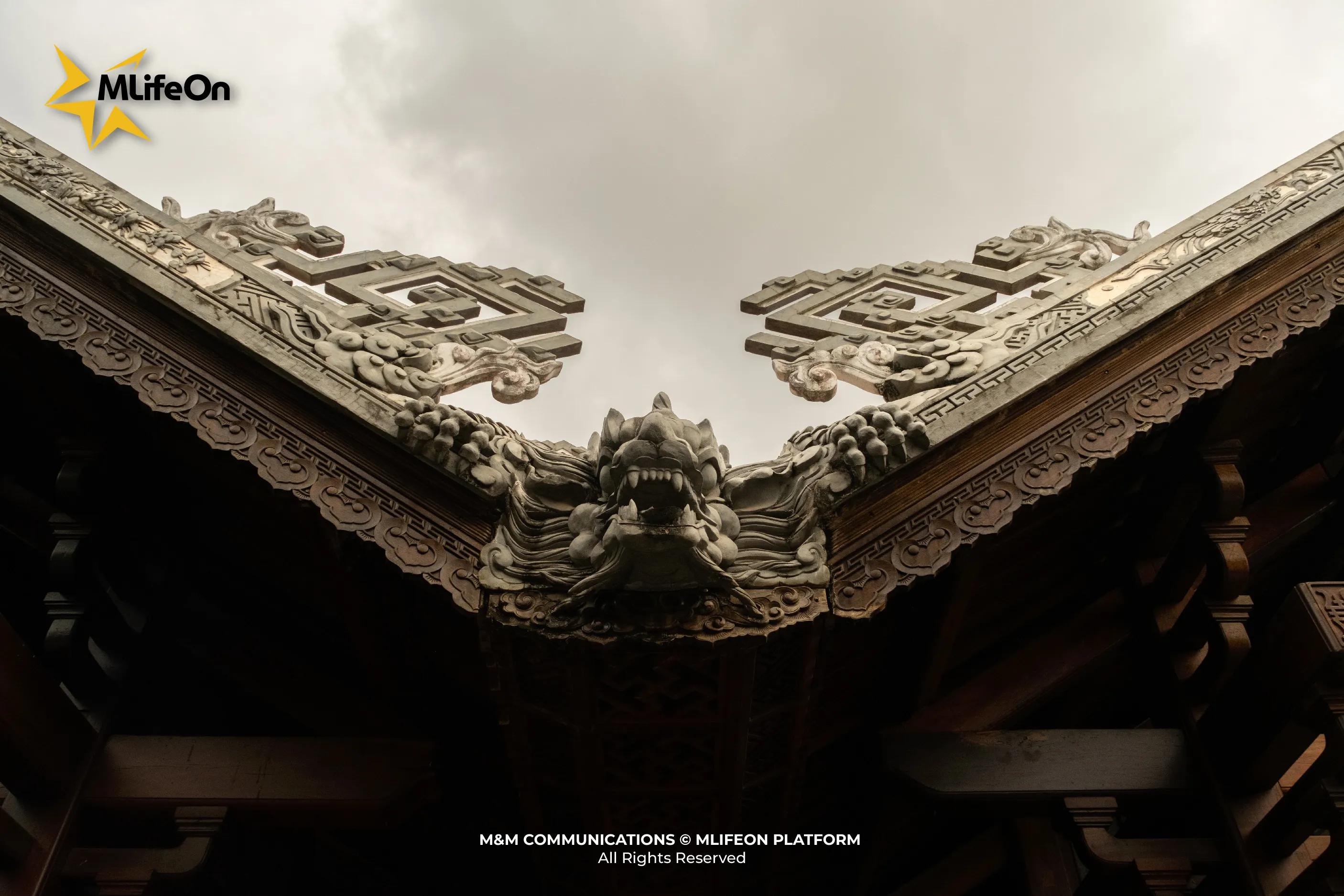
The more we travel, the more we visit spiritual places, the more we understand why as life and society become more and more developed and chaotic, people want to visit more and more spiritual places.
If you have the opportunity to visit the land of the great mountains, please take some time to visit Sac Tu Khai Doan Pagoda - a prominent Buddhist work located right in the center of Buon Ma Thuot City!
------
CREDIT:
- Photography: Quan Tran
- Content: Giang Huynh
- Design: Phuong Nguyen





















